Board layout
The board partner card relies on a pure in-house design on a 10-layer board, but remains with the 8-pin connector and a fairly short format. The power supply is a simplified design with 6+2 phases and inductor instead of MOSFET DCR. This is completely sufficient in this performance class, especially since MSI relies on Dr.MOS for the voltage converters.
We see six voltage converter phases for GPU power supply, and two more for memory. For the GPU, you rely on an NCP81610 from ON Semi that could generate up to 8 phases, but here only 6 generates. The memory is provided by a small uP1666 from UPI, which only has to deliver two phases.
For the six GPU phases, two asymmetric FDPC5018SG from On Semiconductor is used per phase, which realizes the high- and low-side. The MOSFET pair is controlled by an NCP81158, a Dual Synchronous Buck MOSFET Driver from ON Semi. The voltage regulation of the memory relies on a total of two FDPC8016S, i.e. Asymmetric Dual N-Channel MOSFETs from the same manufacturer, i.e. good Dr.MOS for the high- and low-side.
Also interesting is the NCP 45491, a quad-channel power input management IC for monitoring the input rails to maintain the maximum board power.
An ITE 8295FN acts as a microcontroller and takes over e.g. RGB control. The whole thing is smoothed for the GPU with the usual MSI-labelled 220 mH coils, with memory even those with 470 mH. As always, they are encapsulated and encapsulated ferrite core coils with the MSI dragon logo. The fact that the card has a single BIOS is no secret and I couldn't see any other subtleties in the pictures.
The memory is again the usual 8GB GDDR6 SGRAM modules (2 channels x 256 Meg x 16 I/O, 2 channels x 512 Meg x 8 I/O) from Micron, which have a bandwidth of 14Gb/s. Since a total of eight modules are installed, the memory expansion of 8 GB is also available. Which I would be able to get through with.
The following table contains the most important components:
Cooler
Under the cover, two separately controlled fans rotate over the also two-part cooler, whose narrow-facing slats are arranged vertically and receive the waste heat from the nickel-plated heatsink via a total of eight nickel-plated 6 mm heatpipes, of which the two middles were bent again in the GPU block.
There are two mounting and cooling frames on the board, one of which cools all RAM modules, while the second, smaller frame cools the voltage converters and gate drivers. On the top, a 3 mm softpad then connects part of the surface to the cooling fins of the upper cooling block. MSI has learned and by the (often enough required in the past) two-division of the frame also prevents the voltage converters from heating up the memory. In addition, a separate fan control is possible.
The backplate absorbs the waste heat of the voltage converters at the back of the board and also includes the area of the coils. This large-area softpad sticks to the backplate, the insulating film has been cut out here. Loeblich.
| Cooling system at a glance | |
|---|---|
| Type of cooler: | Air |
| Heatsink: | Copper, nickel-plated |
| Cooling fins: | Aluminum, vertical alignment related |
| Heatpipes | 4x 6 mm copper composite, nickel-plated |
| VRM cooling: | Via separate cooling frame |
| RAM cooling | Via separate cooling frame |
| Fan: | 2x 8.7 cm fan, 2x 9 cm openings Semi-passive with fan stop |
| Backplate | Aluminum Active cooling function |















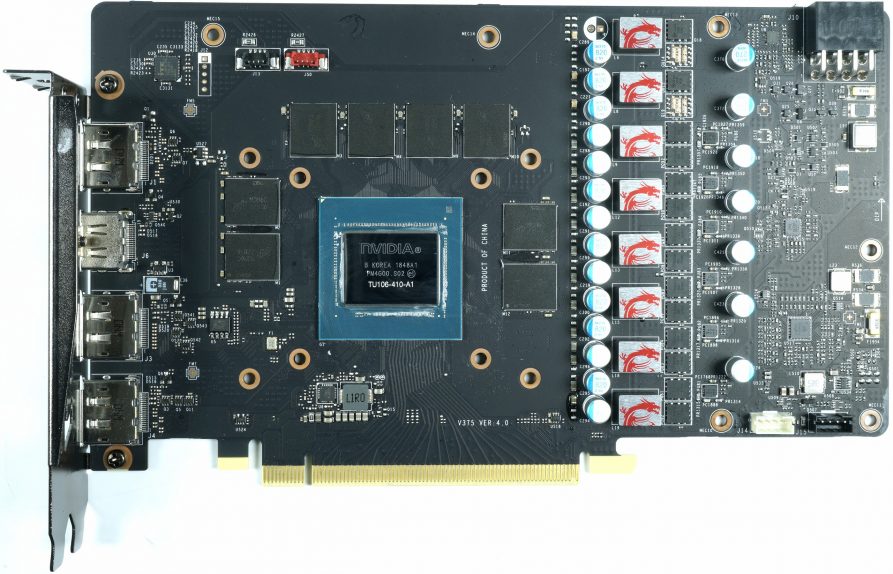
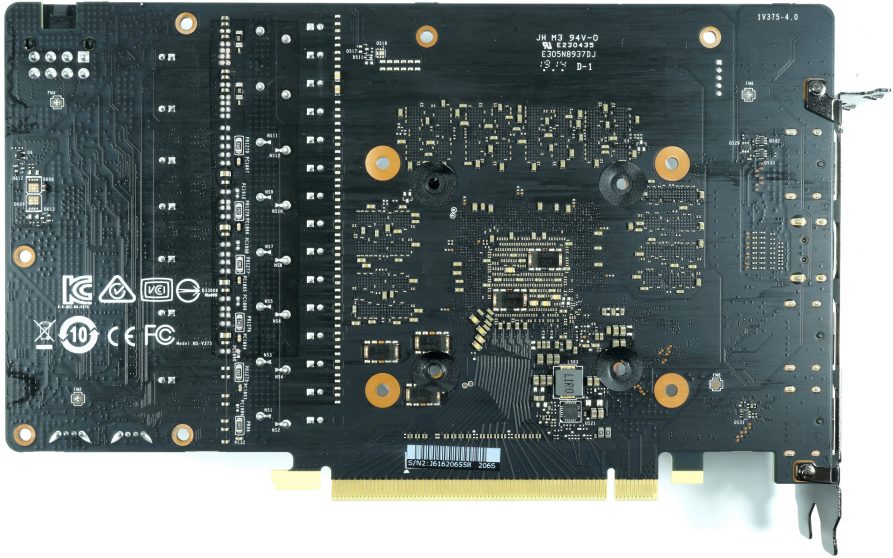
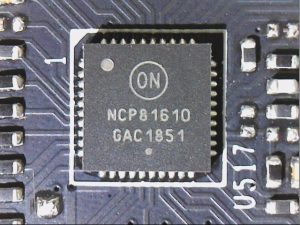
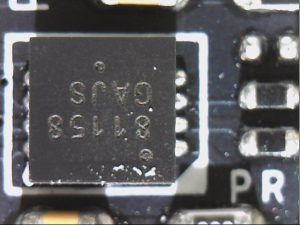
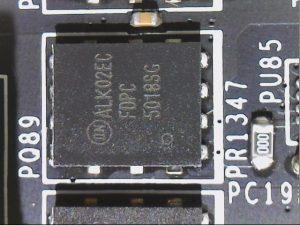
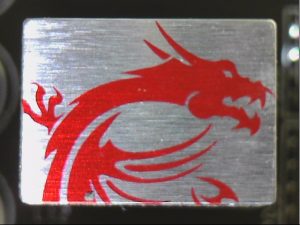
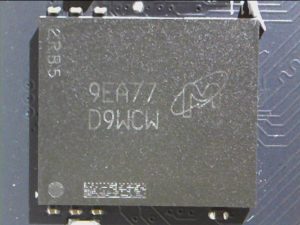
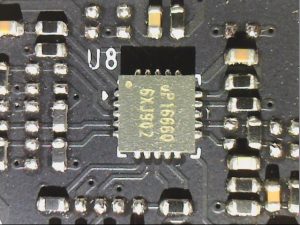
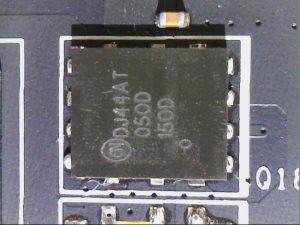
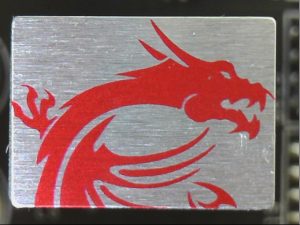
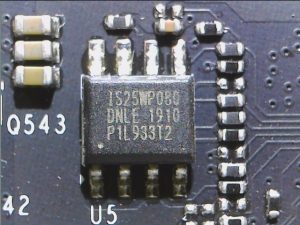
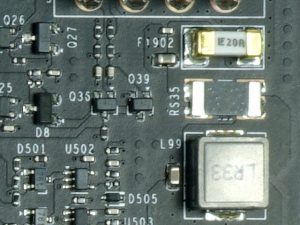
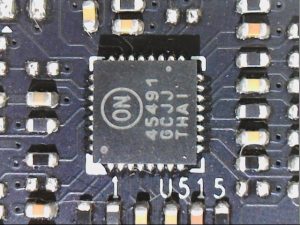
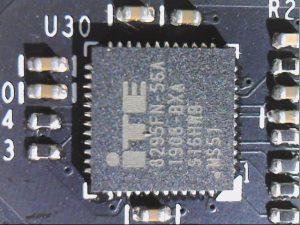
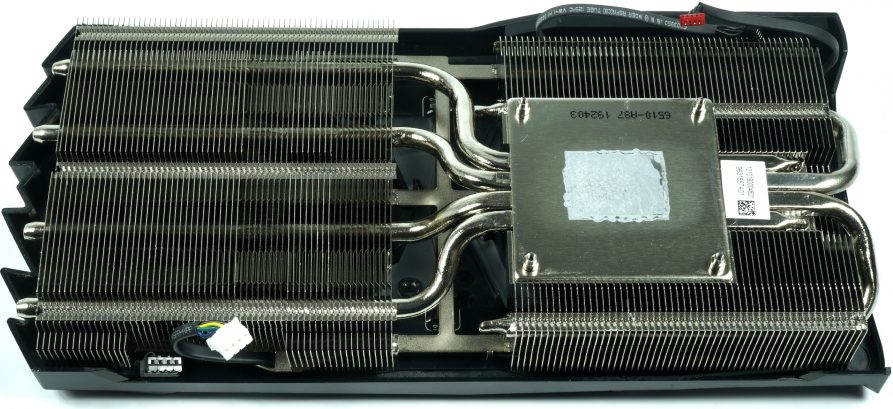
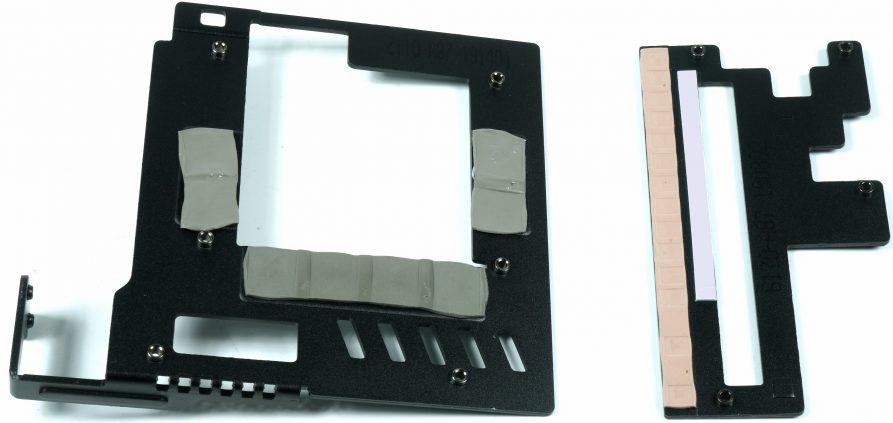
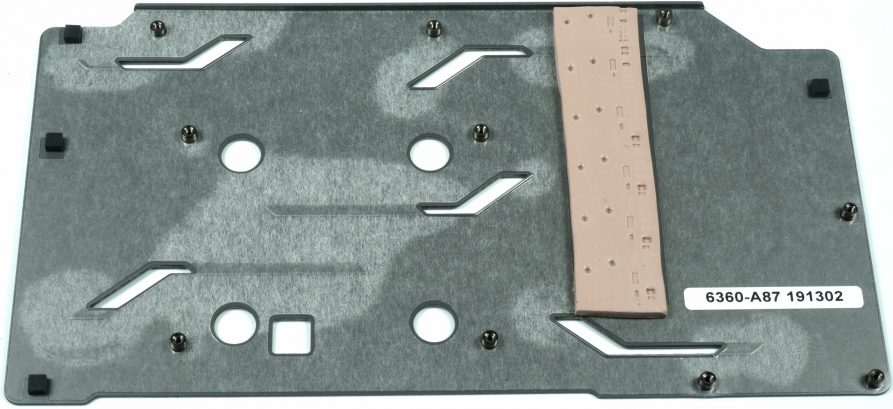


















Kommentieren